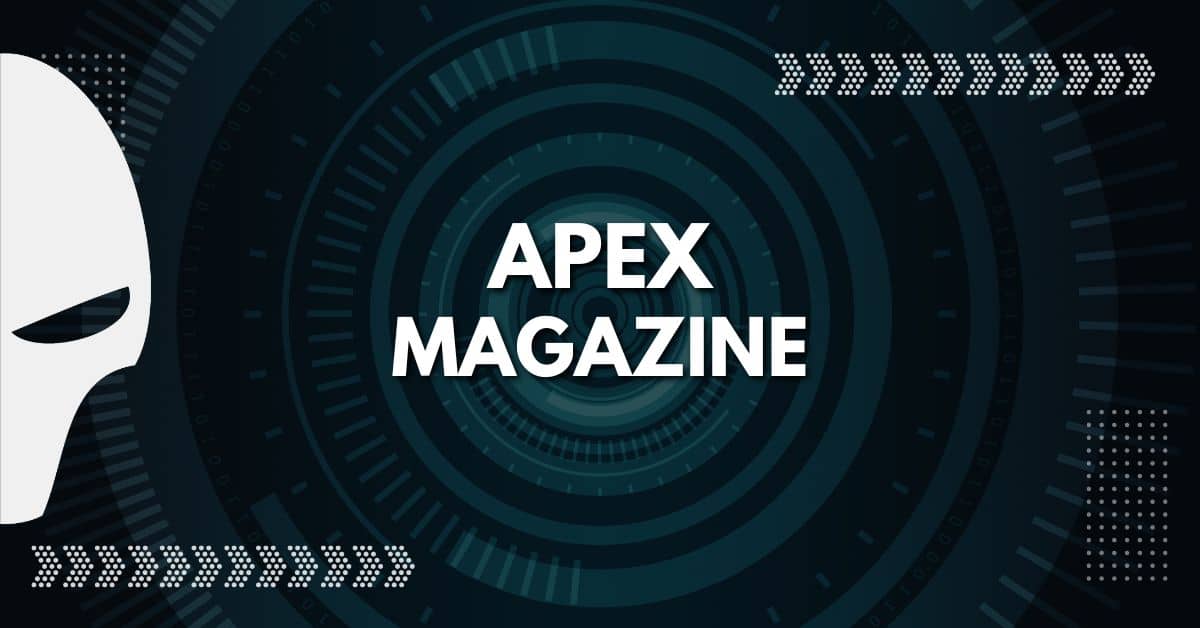
Unless you’re a professional wrestling fan, you’ve probably never heard of Al Snow. A wrestler who hit the heights of the mid-card in the nineties, he's never been one of the wrestling fraternity that has broken through into the public consciousness the way main event stars like Hulk Hogan and Steve Austin did.
Despite this, Al Snow is a fascinating wrestler from a writer's point of view. He’s spent years behind the scenes, training new wrestlers, booking development territories[i], talking about wrestling and generally holding forth on the state of the industry. Basically, Al Snow is a smart wrestler who’s fond of a good rant about the way wrestling works. There are plenty of lessons he tries to teach that are equally useful for an aspiring author.
What follows are five pieces of wrestling advice picked up from Snow's interviews, along with their corresponding lessons for science fiction and fantasy writers.
1. People Do Not Have a Physical Relationship to Wrestling
The most popular televised sports are frequently those that mimic the games we play as children. We run track and field at school, or play football in the back yard, or we learn to swim. When we watch people competing at a professional level, we have muscle memory and experience that allows us to recognize athletes operating at an extraordinary level. We know how good professional athletes are because we know our own limits.
Professional wrestling doesn’t have that advantage. How many of us can legitimately claim to have been whipped into the ring ropes, or jumped from the top rope to plant an elbow on a downed opponent? Even the less flashy moves are unfamiliar, since most schoolyard fights don’t start with a collar-and-elbow tie-up. At best, we've applied a headlock, or thrown a punch.
Without the physical relationship to make the action meaningful, pro-wrestling goes for the emotion. It tells stories from the heart, looking for ways to invoke familiar feelings that make the fans want to see one guy win and one guy lose. This is the appeal of pro-wrestling: I don’t know the physical actions involved, but I understand winning. I understand wanting to get into it with someone I disagree with, or someone who insults me. I understand wanting to be the best, and the desire to get revenge on someone who screwed me or ruined a moment of triumph.
Those emotions give context to the in-ring action, and that context gives it the meaning it lacks because I don’t have the physical relationship. This isn't so different from the problems speculative fiction writers face when creating alien worlds, strange futures, or fantasy empires. Unlike mimetic literary fiction, we frequently present our readers with worlds they cannot physically engage with or understand, and the way in which we make these alien experiences comprehensible is through the manipulation of emotion. Like wrestlers, we look for the familiar--little actions, big emotions, a place for the reader to connect--so there’s a sliver of truth amid the fantasy we’re presenting.
2. There Are No Bad Gimmicks
The pageantry of pro-wrestling means there's a constant parade of gimmicks and personalities on display, ranging from the utterly serious to the utterly absurd. The same company that features Kurt Angle or Brock Lesnar, both legitimate wrestlers with impressive amateur credentials, will also employ wrestlers whose gimmicks range from the stupid to the deeply bizarre.
Even a cursory examination of websites set up to catalogue and archive the worst of these gimmicks, such as Wrestlecrap.com, will reveal a motley assortment of wrestling heavy metal guitarists, leprechauns, and yeti. Many of these gimmicks have failed, and failed badly.
Yet absurdity isn't the kiss of death in pro-wrestling. Take, for example, the perennial World Wrestling Entertainment (WWE) favourite The Undertaker. His gimmick is absurd on multiple levels: an undead mortuary assistant from the old west, seemingly impervious to pain and capable of causing arena-wide blackouts with his supernatural abilities, prone to terrifying opponents with bolts of lightning summoned from the heavens. It's not just the Undertaker's gimmick that's absurd; over the course of his career he's been controlled by a manager using a supernatural urn, risen from the dead after being buried in a casket match[ii], and fought a motley assortment of similarly bizarre opponents including his own half-brother, Kane, whose pyromaniac tendencies verge on the supernatural as well.
It sounds terrible, and on paper it seems like exactly the kind of wrestling excesses that Wrestlecrap is set up to mock, but over the course of his twenty-two-year career, the Undertaker has become one of the most popular wrestlers of all time. As Snow puts it, it's the wrestler's responsibility to make it work.
That the Undertaker character worked is a testament to two of the enduring truths of pro-wrestling--one, a gimmick is at its best when it reflects some aspect of the wrestler's personality. Mark Calloway (who wrestles as The Undertaker) isn't an undead mortuary assistant, but he is a quiet guy with a reputation for being tough. When the Undertaker threatens someone, it's rarely with words; he simply looms, letting his reputation and stoic calm in the face of violence strike fear into his targets. When he takes a pounding then rises, zombie-like, from the mat, he's merely amplifying an aspect of own personality to extreme levels.
Two, wrestling's audience wants to suspend their disbelief. What should have been a terrible gimmick works because the wrester behind the gimmick embraced it wholeheartedly, treating even the most absurd elements of his gimmick as though they were entirely plausible and serious. While it would be all-too-easy to treat his character as a joke, or allow others to do the same, The Undertaker endures as a supernatural "phenom[iii]" that terrifies even the bravest opponent some two decades after he debuted the character in 1990.
There are two lessons here for writers.
First, even the most absurd ideas can be transformed into something extraordinarily compelling if they're taken seriously and you find a core truth that allows you do so. Readers take their cues from the work itself; a work that treats a seemingly goofy idea with utter seriousness will allow the reader to do the same. The moment you play it for laughs, the reader is free to stop treating it as meaningful.
Second, respect your audience no matter what project you're working on. As your career progresses, you'll be invited to work for anthologies whose topics strike you as bizarre, or writing for a genre that's outside your comfort zone. In these situations it can be easy to play the theme or genre for laughs, but you owe it to the fans to play it straight and deliver the best work you can. They want to suspend their disbelief, and they won't appreciate it if you're the guy who chooses to complain about his gimmick rather than figure out how to make it work.
3. If Everyone Else Is Talking, Be The Guy Who’s Yelling
It's a piece of advice Snow inherited from one of his mentors, and it basically translates as do the opposite thing of everyone else in the company. It's an easy way for a wrestler to stand out and get noticed. It may not make you friends, but if it works then it can get you over[iv].
The history of pro-wrestling is filled with examples where exactly this approach has worked. In the mid-nineties the WWF was filled with wrestlers using colourful gimmicks aimed primarily at children, and in the middle of it all was a foul-mouthed redneck named Steve Austin who wore black trunks and kicked ass. It's a gimmick that immediately caught on with the crowd, elevating Stone Cold Steve Austin to the top of the wrestling card and beyond.
In more recent years, to the surprise of many wrestling fans, wrestlers like the straight-edge CM Punk and technically oriented Daniel Bryan have risen to the top of the WWE roster. Both performers had long careers on the independent scene, working for smaller promotions, but were frequently regarded as being "non-WWE" wrestlers when they signed for the world's biggest wrestling promotion. Yet their styles and promos were a stark contrast to the rest of the roster, and their talent earned them a following amongst the WWE crowds.
Writers are given the same option. Short story writers submitting to themed anthologies can do worse than to create a list of the most obvious stories suggested by the theme and doing the opposite. Novelists can look toward the number of SF and Fantasy writers who have made their careers by going against the norms of the genre at the time.
4. The Wrestling Business Is Actually the Wrestler's Business
There are plenty of people involved in wrestling who never get involved with the in-ring action. Promoters put on the show; bookers schedule the matches and determine the long-term storylines; in the modern television era there are writers putting together words that go into the wrestler's mouths.
None of this matters, Snow argues, once you step into the ring with your opponent. Once there, it's the face's[v] job to get himself over (win the approval of the crowd), while the heel's[vi] sole task is to generate heat[vii] (make the crowd wish he'll get beaten), and it's up the wrestlers to do the bulk of the work and ultimately pop the crowd[viii]. Even when faced with an uncooperative opponent, a wrestler has the freedom to change their tactics in order to generate the heat or approval they're after.
Despite this, some wrestlers have convinced themselves that many of the people that put the show together hold the power in the industry. They lose sight of the fact that the promoter provides the venue, the booker makes the matches, but it's the wrestlers who have to do the work and entertain the crowd one they're given the opportunity.
And without the wrestlers, the business falls apart.
Wrestling, like publishing, requires a level of synchronicity between the creative talent and the team that produces and distributes their respective creative products. Despite this, many writers have adopted a similar mindset to pro-wrestlers, ceding power to their editors and publishers. The editors suggested changes are treated as law, regardless of the writer's intent. The concept of questioning a contract, let alone negotiating it, seems strangely inconceivable, especially when writing short stories or poetry.
Publishers and editors, like wrestling promoters, provide an opportunity. It's up to the writer to make the most of that and entertain the crowd.
5. The Best Match Ever?
One of the recurring themes of any Al Snow shoot is that wrestling is a business. It may be fake--it’s always been fake--but the wrestler’s job is to get in there and put on a match that allows fans to suspend their disbelief and buy into the illusion that it’s real. This is no different from fiction, at all, and it’s one of the reasons I’m always perplexed when people look down on pro-wrestling.
In Al Snow’s wrestling world, “good” is less valuable than “profitable.” He looks at Wrestlemania III, arguably the biggest and most-watched wrestling show of all time, and challenges the conventional wisdom of wrestling critics that suggests that the technically brilliant match between Ricky Steamboat and Randy Savage was better than the headline match between Hulk Hogan and Andre the Giant. The critics aren’t wrong. You can find both those matches on YouTube if you search, and there’s no doubt that watching the athletic display of the former is far more interesting than the plodding action of the latter.
But people paid to see Hulk Hogan--a charismatic bodybuilder with a five-move arsenal--body slam Andre the Giant and that makes it the best match on the card in Al Snow’s world. Hulk-Andre made the company money, it kept people coming back for more, and it had casual fans invested even if the hardcore wrestling fans would rather watch the guys in the midcard[ix].
Hulk-Andre elevated the wrestling industry. It made the WWF (now the WWE) more money, which filtered down to everyone working on the lower card, and allowed many more wrestlers to have a career.
Given the choice of being Ricky Steamboat or Hulk Hogan, I’d still probably choose to be Steamboat. He was smaller, faster, more athletic, and over the course of his career, he drew plenty of money as a wrestler. People paid to see him wrestle, to see him gain and defend championship belts, to see him face-downnemesisafter nemesis. He coupled quality matches with the ability to make money, and while he never became the star Hulk Hogan did, you’d be hard pressed to say that he didn’t do okay for himself.
But it’s stupid to look down on Hulk Hogan when what he’s doing works. When what he’s doing is bringing other people to the show, and creating the platform that allows everyone else to earn money as well.
Replace “Hulk-Andre” with ”Twilight” and you’re probably seeing the analogy I’m making. I may not enjoy Twilight as a reader--I may find it enormously problematic as a cultural phenomenon--but that doesn’t mean I want it to cease existing. By some objective standards it may qualify as the best book in publishing history--it’s not only a blockbuster that generated new readers, but it’s now spawned a second blockbuster (equally maligned) in the form of50 Shades of Grey, and that income allows their respective publishers to produce works by other writers.
Wrestling may be fake, but that's why I find it interesting. These five pieces of advice have been culled from hours of Al Snow's discussions, and it barely touches on the narrative complexities specific to the kind of storytelling that pro-wrestling does on a day-to-day basis.
As a storyteller, I'm always eager to learn more about the narratives I consume, regardless of whether they're film, fiction, television, or pro-wrestling. At best, I learn something that informs my own practice. At worst, I get to watch smart, passionate people talk about their creative process in interesting ways. In this respect, Al Snow is a goldmine, as smart and passionate about pro-wrestling as any SF author is when asked to talk about their art.
Recommended Viewing
Guest Booker with Al Snow: The Attitude Era, Kayfabe Commentaries
Secrets of the Ring with Al Snow, Ring of Honor
Shoot with Al Snow 2008, RF Video
[i] Development territories: A smaller wrestling promotion maintained by a larger company, used as a place where inexperienced wresters can be sent to learn the trade and get used to performing in front of crowds/performing for TV.
[ii] Casket Match: A wrestling bout where the goal is to throw your opponent into a coffin and nail shut the lid. Traditionally used as the climax of a wrestling feud that featured The Undertaker.
[iii] Phenom: A nick-name frequently used to describe The Undertaker.
[iv] Getting Over: the process of being accepted and supported by the fans. Faces get over by being cheered, heels by being hated and inciting the fans to pay money to see them lose.
[v] Face: the good guy in a wrestling match; the wrestler the crowd is meant to be cheering.
[vi] Heel: the bad guy in a wrestling match; the wrestler the crowd is meant to be booing.
[vii] Heat: inciting a negative crowd reaction in order to get over as a heel.
[viii] Pop: provoke an extreme reaction from a wrestling crowd. The purpose of most wrestling matches is to build an in-ring story that results in a "pop" from the crowd when the face finally succeeds in outwitting the heel after several failed attempts to win the match.
[ix] Midcard: a wrestler who appears in the middle of a program; well-known, but not currently a big-money draw compared to those in the main event.












